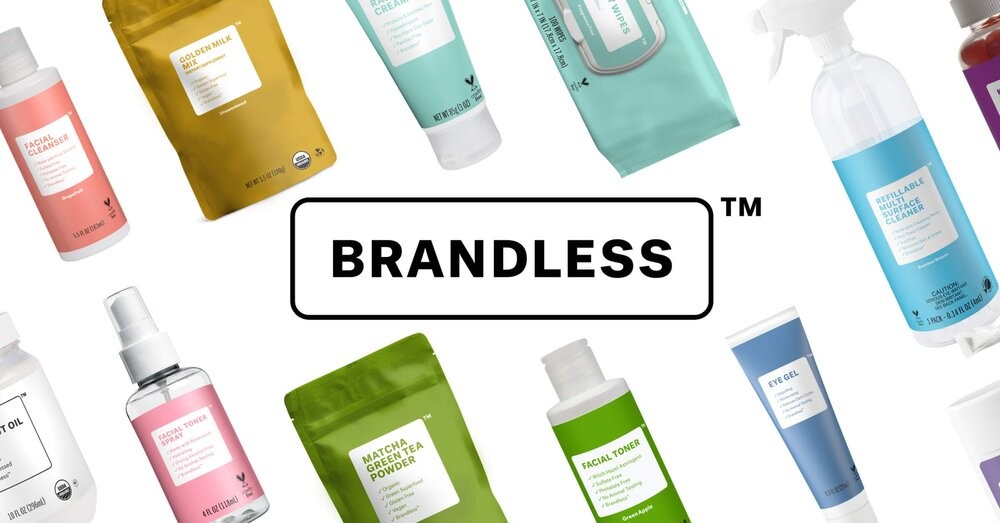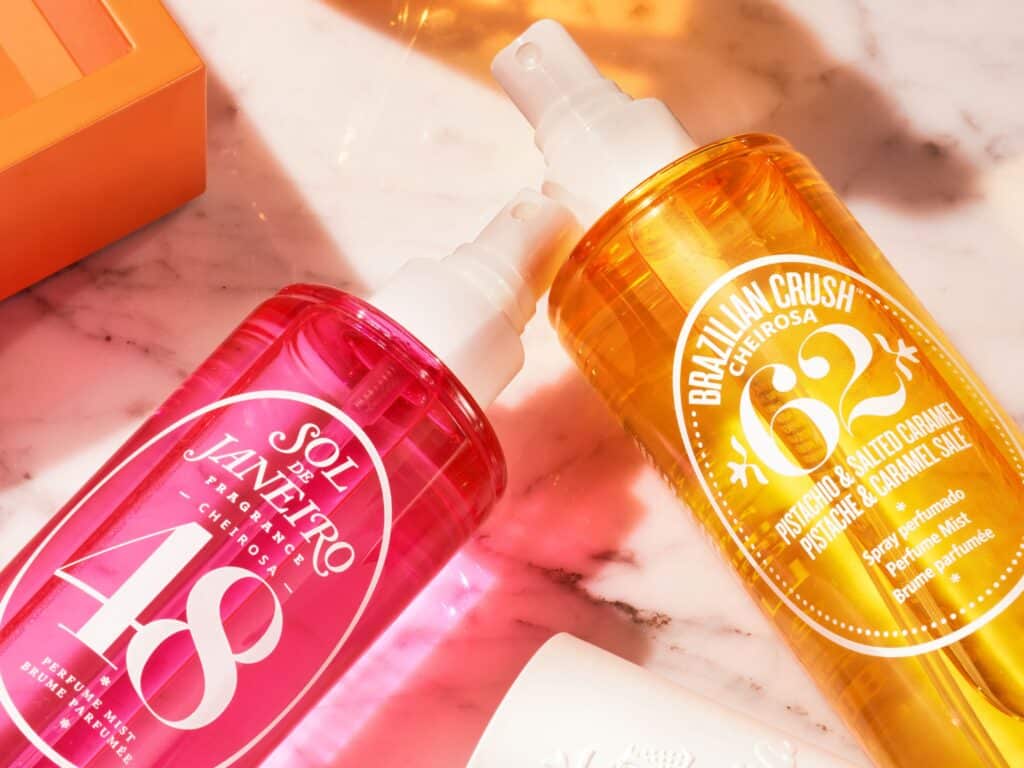The Fall/Winter 2021 collections – whether they were ones on the runway in New York or on catwalks in Paris – made it clear that logomania is back. After doing away with ubiquitous branding several years ago, on the heels of what the widespread demonstration of has been referred to as “logo fatigue,” even some of more logo-adverse brands could not seem to stay away. Vogue’s Sarah Mower made note that season of “the gathering resurgence of logomania” at the likes of Burberry and Alessandro Michele’s Gucci. The Hollywood Reporter’s Booth Moore noted, “Elsewhere on the runways, we saw more of the logo mania that has been overtaking designers.”
The Cost of Branding
But while logomania has found a recurring home in the collections of many designers, not all companies are marketing themselves by way of bold logos. At least a few brands are taking the opposite approach, and banking on the appeal of “un-branded” – or more accurately, less aggressively branded – products. For instance, The Unbranded Brand, the Montreal-based jeans company that launched by denim veteran Brandon Svarc, who also started Naked&Famous, is making its name by way of “jeans with no branding, no washes, no embroidery, no ad campaigns and no celebrities.” In lieu of a branded patch on the back – there is a blank one, and instead of a logo-ed tag on the inside – another blank one.
At the same time, there is the somewhat aptly-named Brandless. Launched in July 2017 and headquartered in San Francisco, the direct-to-consumer company is bucking the ostentatious logo trend, and going much more minimal. Describing itself as “a group of thinkers, eaters, doers, and lovers of life with big dreams about changing the world,” Brandless is on a mission to make “better stuff” – its beauty products, for example, are free from “400 harmful ingredients like parabens, polypropylene, phthalates, and sulfates” – sans any over-powering branding, of course.

Implicit in the missions of both Brandless and The Unbranded Brand is a consciousness about cost. By eliminating “all that is unnecessary about branding, we can offer a better product at a better price,” says The Unbranded Brand. But there is more to the minimal movement than cost; Brandless’ goods are meant to “align with the emerging trend among consumers who have an increasing interest is spending less on private label goods.” Couple this with what millennials have been coined – the generic generation – and you have a budding new trend in marketing.
“Millennials’ lack of preference for national brands is evident in categories including travel, insurance and fashion,” AdAge asserted not too long ago, and it is here that a larger branding-minded move among some companies to offer less-ubiquitously-branded products has seemingly found a popular home.
Just look at Glossier, for instance. Emily Weiss’s cult beauty brand has thrived on something of a downplayed sense of branding. In fact, branding and packaging is one of the most common points of discussion – and praise – surrounding this wildly successful brand, which Weiss launched in 2014 on the heels of creating her heavily-visited blog, Into the Gloss, in 2010.
In a profile of the company, Wired called attention to “Glossier’s branding, which is simple, like French drugstore products.” While the products put forth by Glossier are not always logo-free (some of the products bear a large “G,” others have a small(ish) “Glossier” name on them, others do not bear any logos at all), Glossier’s very aesthetically-appealing packaging – the various tubes of mint balm, cloud paint, and priming moisturizer, etc. with their pastel colored bands and minimalist design – takes center stage in most cases. Any traditional takes on branding (i.e., names and logos) are only secondary.

Overexposed, Distrustful, Unnecessary
So, why is it that consumers, particularly of the millennial and Gen-Z kind, are generally less affected by name brands? Well, it is a combination of factors, of course, including the influx and growing attractiveness of store brands (the stigma of “generic” goods is simply not as strong as it was in the past) and the rise in availability of private labels and direct-to-consumers models, which have “greatly diminished manufacturers’ pricing power,” according to British multinational bank and financial services, Barclays.
Couple that with the lower-than-ever barriers to entry for individuals and companies, alike, to create new brands in the digital age, including by way of social media, and consumers simply have more options. With that in mind, smaller and less heavily branded products are competing for consumers’ dollars more significantly than in years prior.
But maybe most important of all: We simply might not need – and certainly do not engage with – branding in the same way as we used to. First of all, most young consumers are – and have been for the vast majority of their lives – completely inundated with branding and a lot of it, thereby giving it far less power than it has enjoyed in the past. Such overexposure of branding has resulted in a rising mistrust of even some of the market’s most iconic brands.
In addition to being constantly exposed to brands, most consumers nowadays have constant access to endless amounts of information. This inherently changes the role of branding. Individuals in generations prior were essentially forced to rely on branding – or trademarks (words, phrases, symbols, and/or designs), to be specific – as a means of distinguishing between brands and their products, and evaluating the quality associated with each brand. Implicit in the doctrine of trademark law is the notion of goodwill, the valuation and other intangible assets that consumers have come to associate with a brand, after all.
Yes, logos were affixed to products in the past primarily for the purpose of making it easier for less technologically-connected consumers to easily buy a product without having to do a ton of research to determine its quality. You purchased one Arm & Hammer cleaning product in the past, and it worked wonders. You now know that the next time you go to the market, you can buy a different Arm & Hammer product and expect that same level of quality.
That was – more or less – the old way of doing things when it came to branding, and it is still in play to a much lesser extent. Consumers now have iPhones in their pockets and easily accessible online communities with opinions about products. As a result, the practical need that was most traditionally associated with branding is significantly less abundant. With a less immediate need-basis for branding, consumers have – for years in the making now – been engaging with branding in new(ish) ways, including for purely aesthetic reasons, status symbol projecting reasons, etc.
But does that mean that brands are really doing away with branding? No. In an interesting and somewhat ironic move, Brandless filed a trademark application for registration an element of its branding recently. The application seeks a registration for a white rectangle with a small TM symbol next to it. The company’s trademark registration quest suggests that even for brands that explicitly attempt to eliminate branding – in Brandless’ case, it says it is removing brand in order to banish BrandTax, or “the hidden costs you pay for a national brand” – branding continues to play a significant role … even if the branding at issue is minimal.
Minimalist-inspired branding is still branding, after all.
Updated
August 22, 2024
This article was initially published on May 17, 2018 and has been updated accordingly.














